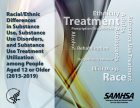Dashboard: Filter Bricks
Main page content



There are protections in federal law, collectively known as “parity,” which are designed to ensure that certain types of health plans cover mental and substance use disorders no less generously than they cover other health issues. This resource can guide you to helpful materials and places.

This brochure gives an overview of the Mental Health Parity and Addiction Equity Act of 2008. It lists some of the common limits placed on mental health and substance use disorder benefits and services.

This chartbook uses combined 2015 to 2019 data from the National Survey on Drug Use and Health (NSDUH) to present nationally representative estimates of substance use, substance use disorders, and substance use treatment utilization among people aged 12 or older within different racial/ethnic groups in the United States. The percentages are annual averages.

This updated TIP is designed to help providers and others better understand how to identify, manage, and prevent substance misuse in older adults. The TIP describes the unique ways in which the signs and symptoms of substance use disorder (SUD) manifest in older adults; drug and alcohol use disorder screening tools, assessments, and treatments specifically tailored for older clients' needs; the interaction between SUDs and cognitive impairment; and strategies to help providers improve their older clients' social functioning and overall wellness.

This fact sheet for teens provides facts about vaping. It describes short- and long-term effects and lists signs of vaping. The fact sheet helps to dispel common myths about vaping. Access sources and references cited in this fact sheet.

This fact sheet (3 of 4) talks about what pregnant women with opioid use disorder should know about and expect after the birth of their baby. This resource includes information about neonatal abstinence syndrome, baby’s needs after birth, and do’s and don’ts for understanding and responding to baby’s needs.

This fact sheet (1 of 4) gives pregnant women with opioid use disorder (OUD) helpful steps to ensure they have a healthy pregnancy and a healthy baby. This resource includes things to know about OUD and pregnancy, and do's and don'ts to keep mother and baby healthy during pregnancy.
Displaying 1 - 10 out of 59

